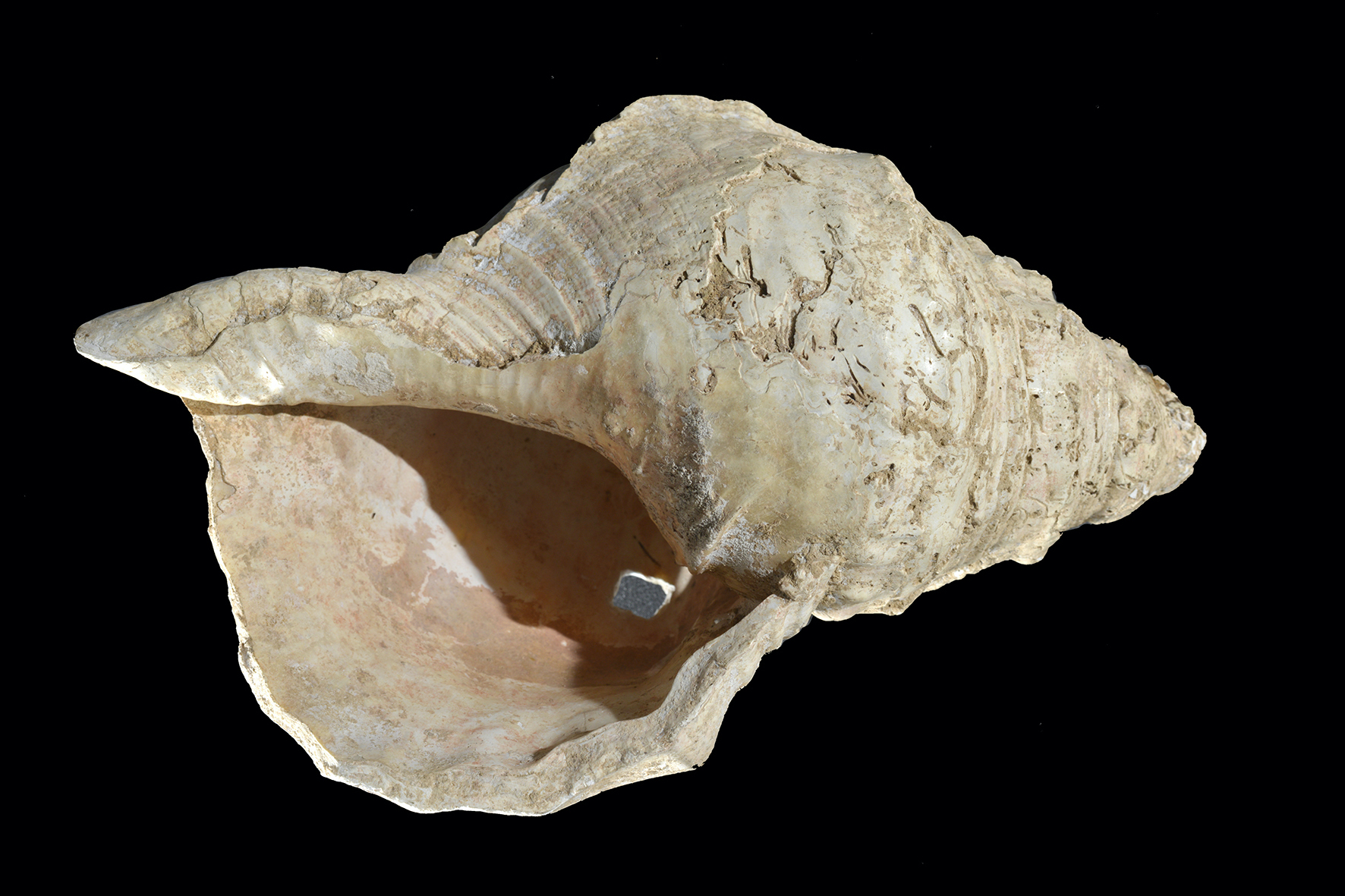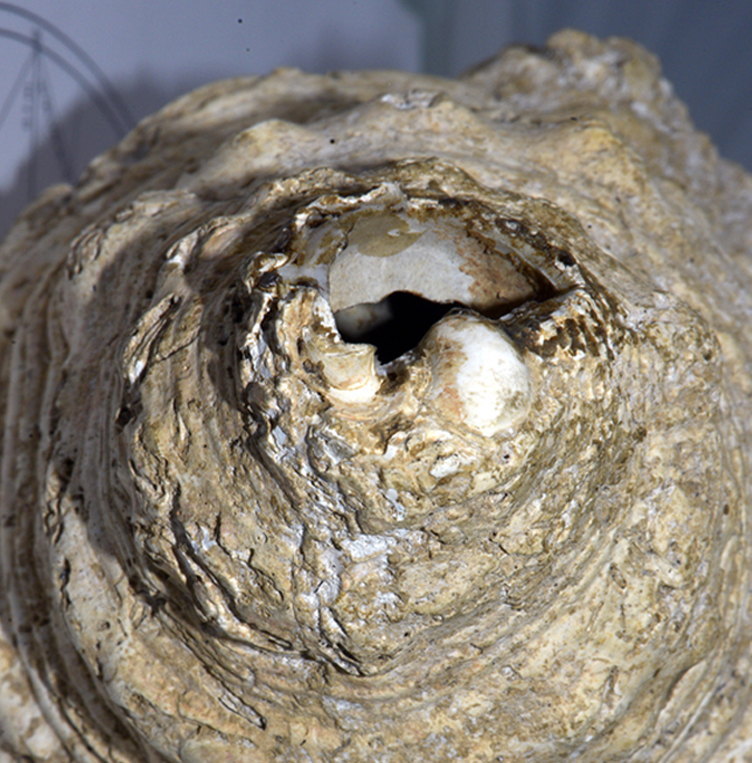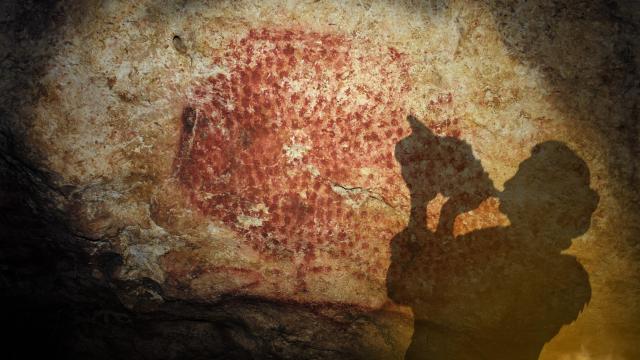The seashell has been collecting dust on a museum shelf in Toulouse for the past 80 years, and before that, it had spent all of recorded history, plus a few millennia, on the floor of a cave in the Pyrenean foothills of Southern France. Now, the Marsoulas conch has been dusted off and played — and you can hear its eerie sound below.
An interdisciplinary French team has described archaeological and chemical analyses of the conch. Part of the archaeological work included actually fitting the shell with a mouthpiece (the original one is lost) and having a musicologist play the shell. Their research is published today in the journal Science Advances.
Excavations by the Smithsonian Institution in 1931 turned up a couple of ancient hearths and associated tools in a cave about 80 km from Toulouse. The Smithsonian team also found vivid wall paintings, similar to those found in caves all over the world, from Spain’s Altamira to Indonesia’s Leang Tedongnge. They dated the cultural detritus in the French cave to the Magdalenian period, which roughly spans 17,000 to 11,000 years ago. But the shell was thought to be a loving cup — a shared, ceremonial drinking vessel. The recent analysis has proved that hypothesis wrong, based on some physical alterations to the conch that outfitted it for resonance and embouchure.
“In the cave, we have a lot of images that look like those in Altamira and others in the Cantabria coast. It’s one more element for us to understand this link between ocean and land — you have the ocean in the cave,” said Carole Fritz, an archaeologist at the Toulouse House for Human and Social Sciences and lead author of the paper, in a press conference held this week at the Museum of Toulouse.

The whorled shell is all that’s left of an ancient Charonia lampas, a predatory sea snail species. At some point, the shell was picked up by Upper Paleolithic humans and brought to Marsoulas Cave, who decorated it with splotches of red ochre (which matched the chemical composition of the cave’s rock art) and manipulated it for music-making.
“To imagine such an intensity produced is amazing, approximately 100 decibels at one metre,” study co-author Phillipe Walter, a chemist and director of the Laboratory of Molecular and Structural Archaeology at Sorbonne University, said during the press conference. “The sound is very directed in the axis of the aperture of the shell.”
Walter said that the structure of the shell would yield a powerful resonance, which could be amplified by the acoustics of the cave itself. Previous X-ray tomographic analysis of conch shells has likened their sound to that of a French horn.
Even at 17,000 years old, the shell horn isn’t the oldest known musical instrument. That title belongs to a vulture bone flute found in Germany, which at 35,000 years old is more than twice as ancient as this shell horn. Nevertheless, the geographical and musical range of instruments in our early history speak to humankind’s impressive capacity for invention.
Alterations that forged the shell into a horn included the chipping away and regularization of the labrum, or the shell’s outer lip, and of course the removal of the shell’s pointed tip, to allow a person to blow through it. Additional alterations suggest it was made for blaring; there was a brownish organic substance at the apex opening that the team thinks was an adhesive for the lost mouthpiece, and CT scans of the object revealed two holes inside the shell where the mouthpiece would have been affixed.

In the expert hands of Jean-Michel Court, a musicologist at the University of Toulouse, the shell horn was capable of producing three distinct pitches: 256 Hertz, 265 Hertz, and 285 Hertz; roughly C, D, and, C sharp, respectively. It’s hardly a tune on its own — just enough to produce the two-toned motif from Jaws. Walter said that with its mouthpiece, the instrument’s range likely would have been expanded, and a musician could further change the object’s sound by inserting a hand inside the shell.
“The next step will be…to go onto the reconstruction of the instrument itself, and then, the kind of sounds, or music one can produce with that replica,” said study co-author Gilles Tosello, an archaeologist at the Houses for the Social Sciences and Humanities in Toulouse, in the conference. “Of course, there will be a lot of hypotheses to check, but we are optimistic.”
When the shell would have been blown remains an open question; it could have been strictly ceremonial or a daily feature. It’s amazing to think that humanity had developed such a diverse musical repertoire so early on, and helps us better understand the arc of musical development.
